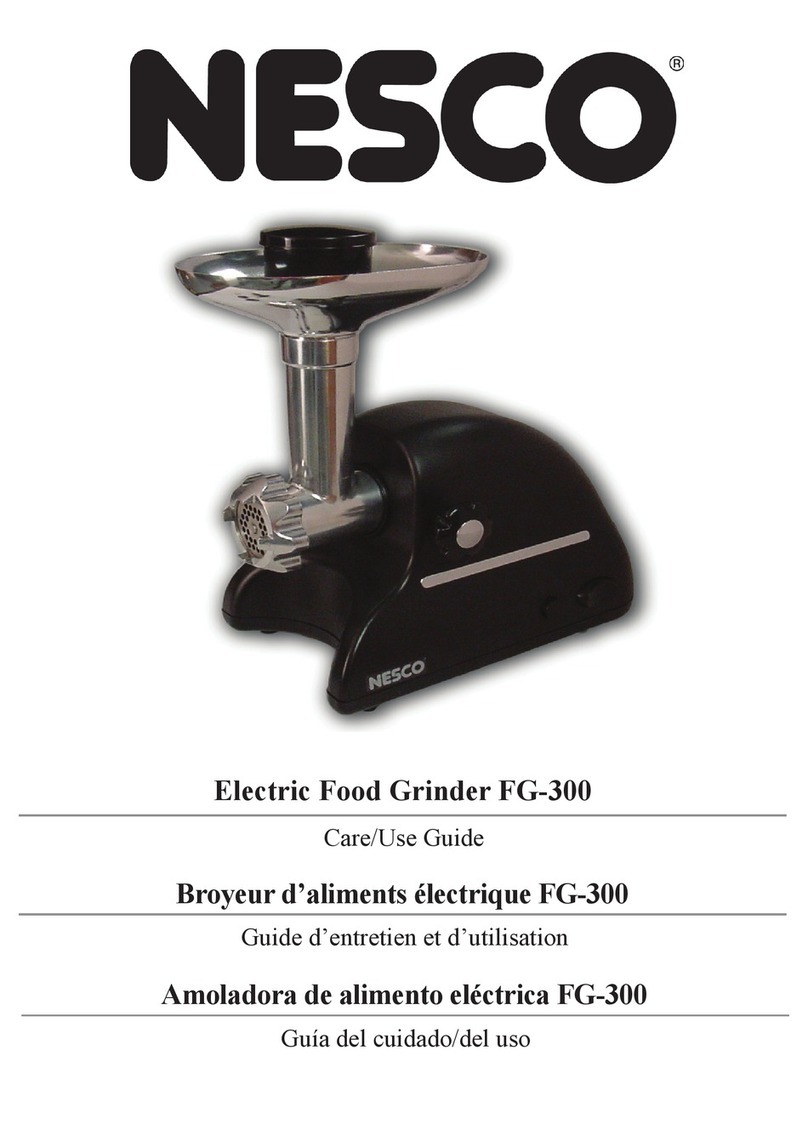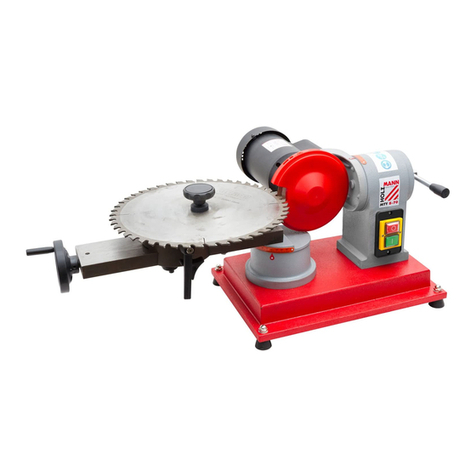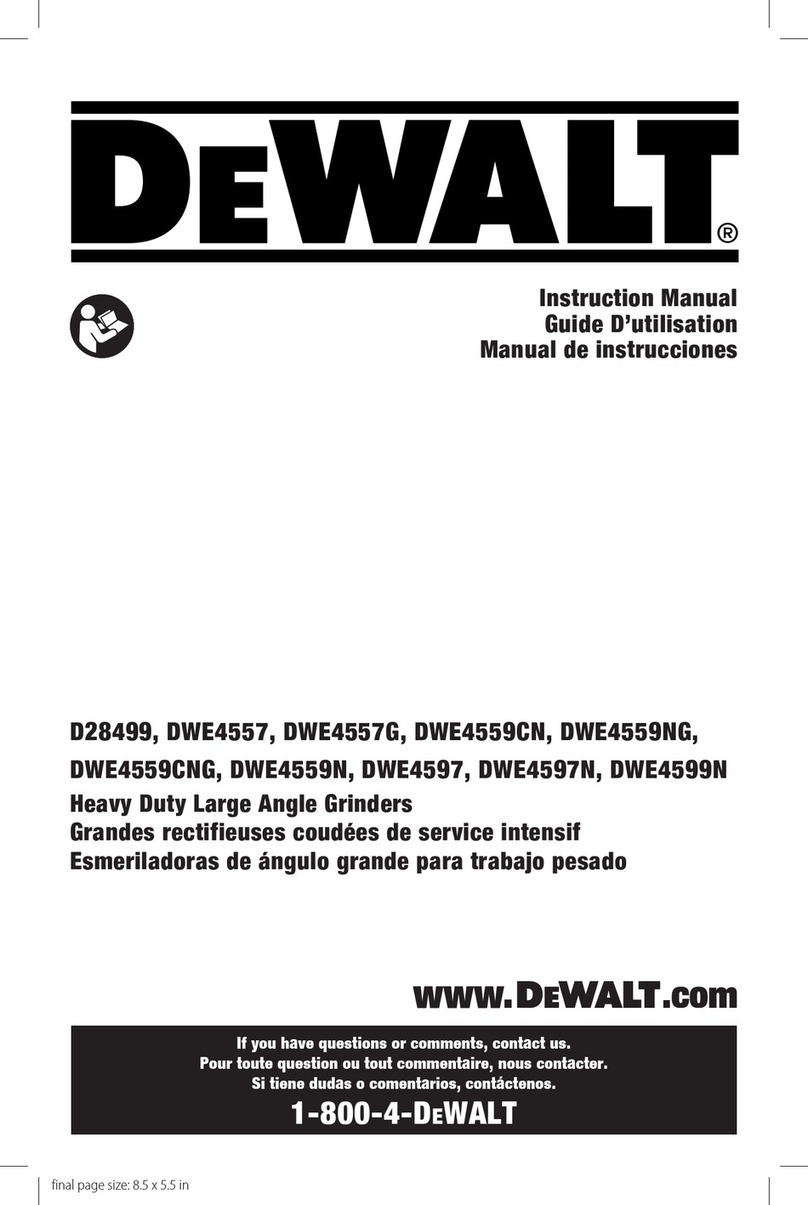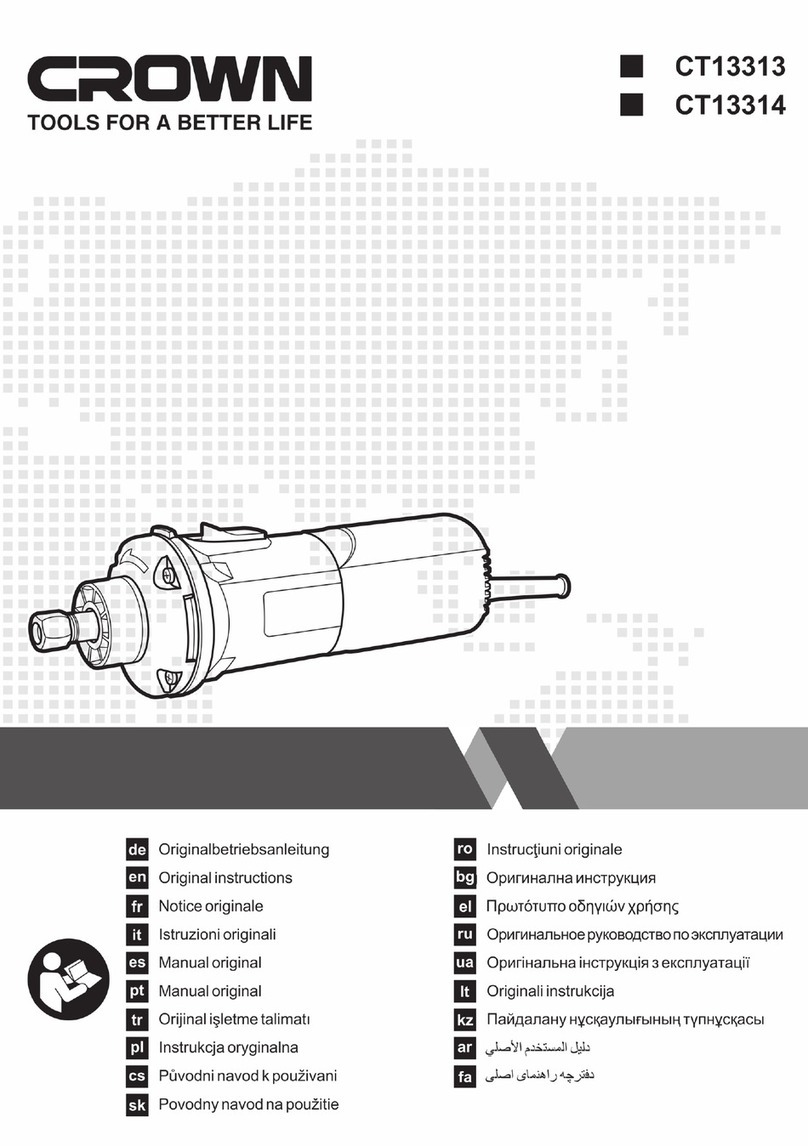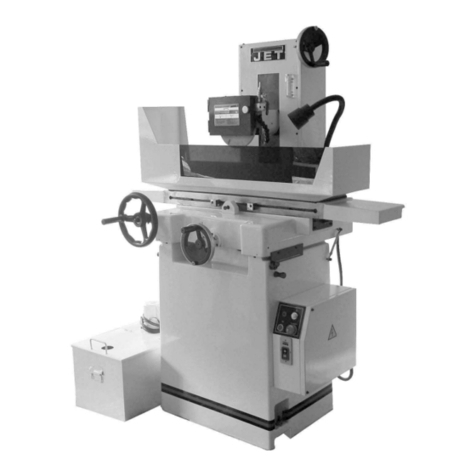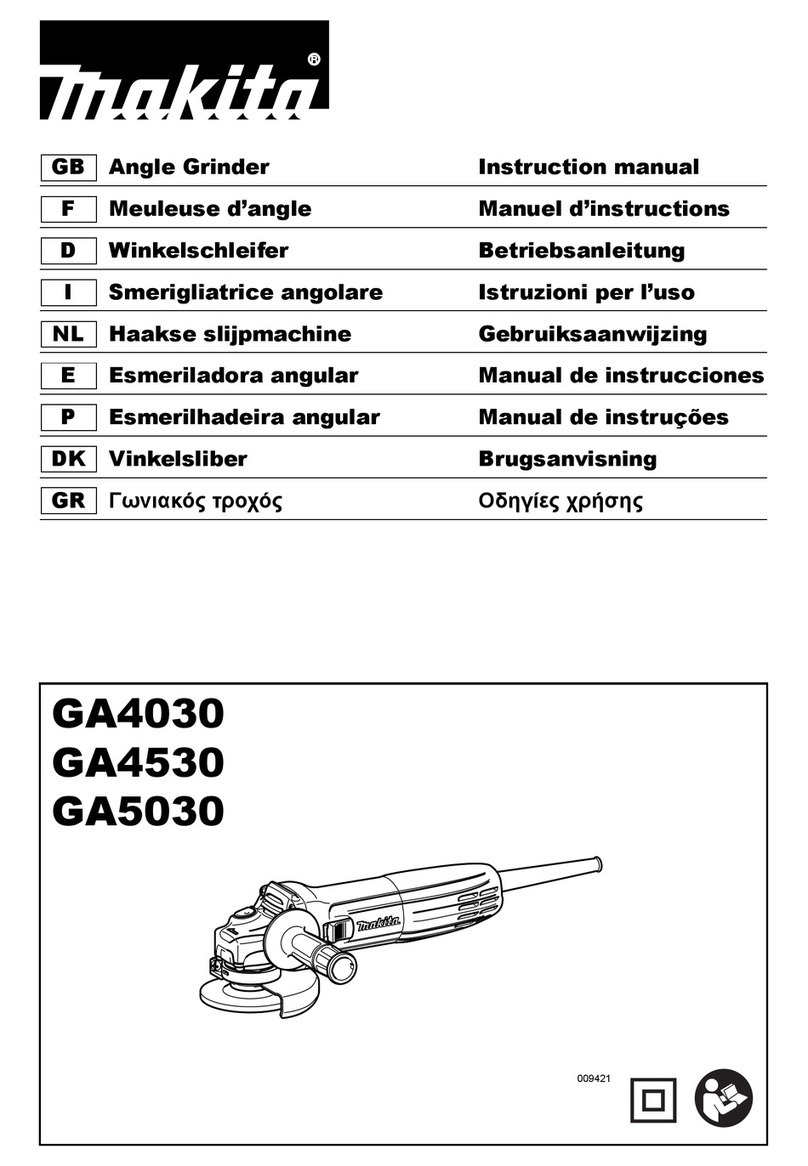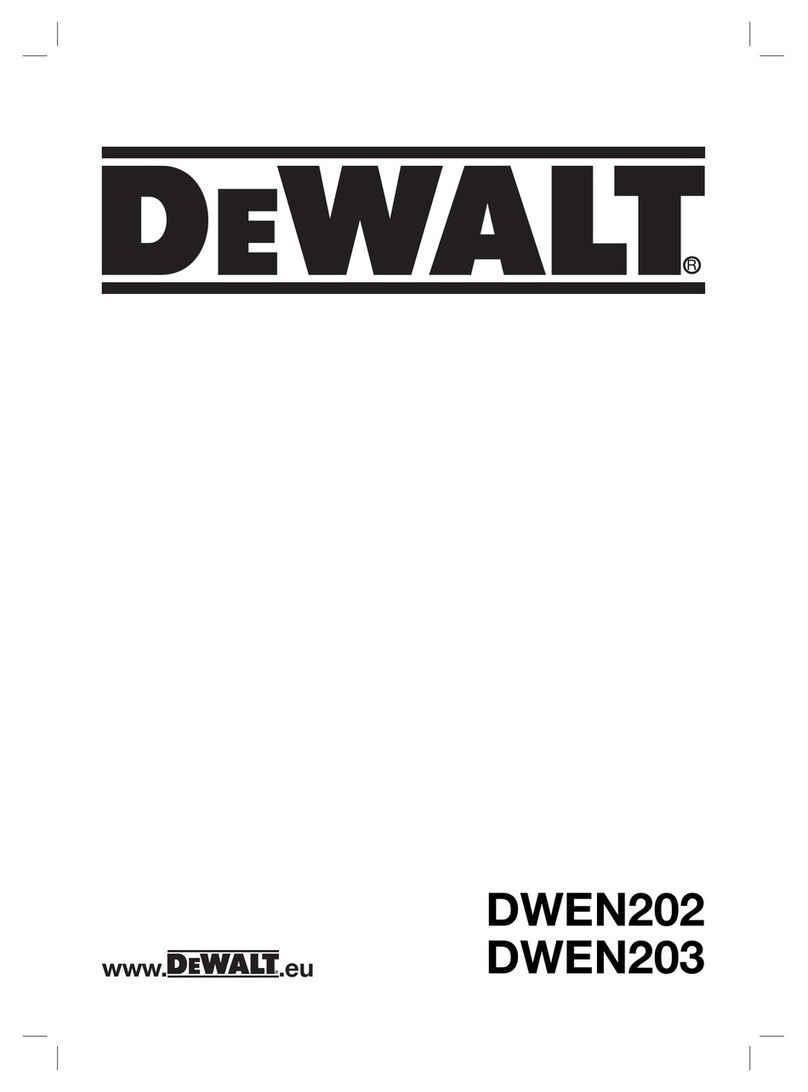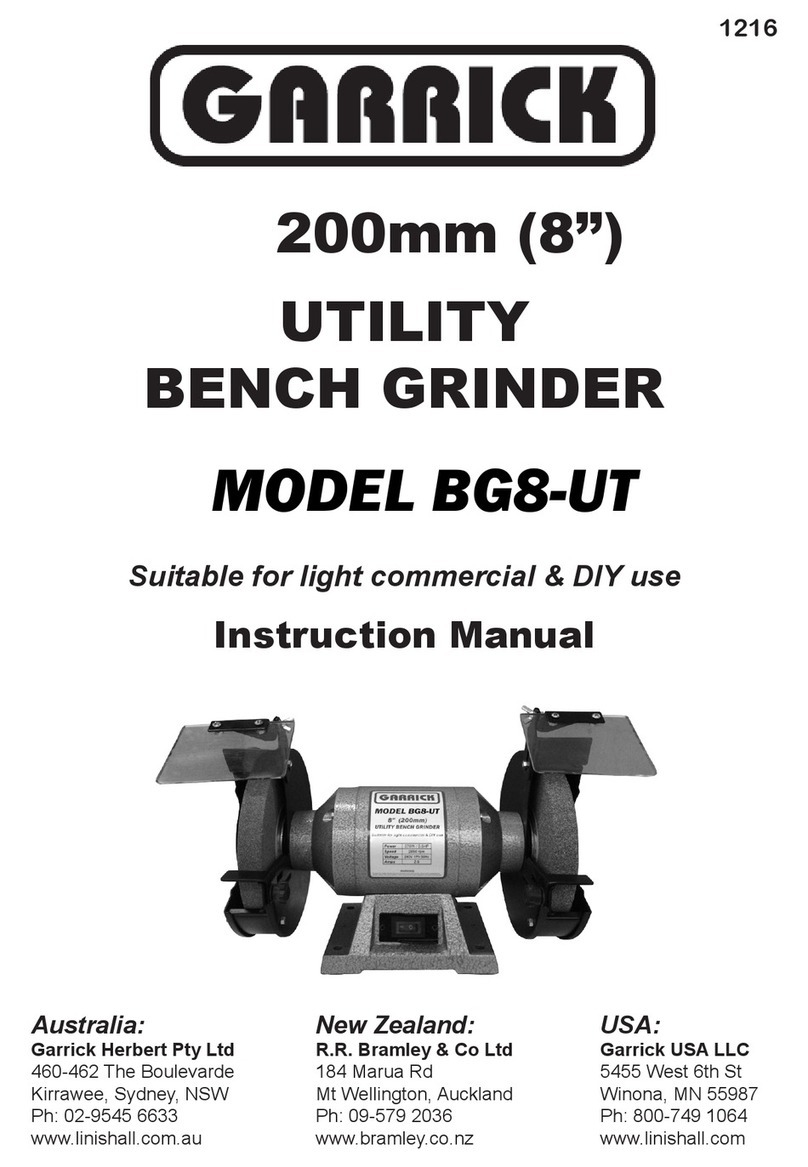Hyundai HY2156 User manual

4.5"/9" ANGLE GRINDER
Models HY2156 - HY2157
User Manual

Page 2
CONTENTS
Section Description
Page No/No’s
1. OWNER’S MANUAL & SAFETY INSTRUCTIONS
3
2. GENERAL SAFETY
3 –5
3. SPECIFIC SAFETY INSTRUCTIONS
5 –6
4. QUICK REFERENCE GUIDE and USE
7
5. ASSEMBLY
7 –9
6. OPERATING INSTRUCTIONS
9 –10
7. GENERAL MAINTENANCE
10
8. SYMBOLS
10
9. ENVIRONMENTAL
11
10. GENPOWER CONTACT DETAILS
11
11. DECLARATIONS OF CONFORMITY
11

Page 3
1. OWNER’S MANUAL & SAFETY INSTRUCTIONS
1.1. How to read the manual.
1.1.1. Keep this manual for the safety warnings and precautions, assembly, operation, inspection,
maintenance and cleaning procedures.
1.1.2. Write the product’s serial number in the back of the manual near the assembly diagram (or
month and year of purchase if product has no number).
1.1.3. Keep this manual and the receipt in a safe and dry place for future reference.
1.1.4. The term “power tool” in the warnings refers to your mains operated (corded) power tool or
battery-operated (cordless) power tool.
1.1.5. This combi drill is intended for inserting and removing screws and bolts within the drill’s
capability.
2. GENERAL SAFETY
Non-observance
will result in the
risk of serious
injury or death to
oneself or others.
Non- observance
will result in the
risk of injury to
oneself or others.
Indicates a hazard
which, if not
avoided, might
result in minor or
moderate injury.
NOTE or
IMPORTANT These
give details or
further
information on
what has already
been said, and aim
to prevent damage
to the machine or
cause other
damage.
Read Manual
DO NOT let comfort or familiarity with product (gained from repeated use) replace
strict adherence to safety rules for the subject product.
MISUSE or failure to follow the safety rules stated in this instruction manual may
cause serious personal injury.
2.1. Work Area Safety
2.1.1. Keep work area clean and well lit. Cluttered or dark areas invite accidents.
2.1.2. Do not operate power tools in explosive atmospheres, such as in the presence of flammable
liquids, gases or dust. Power tools create sparks which may ignite the dust or fumes.
2.1.3. Keep children and bystanders away while operating a power tool. Distractions can cause you
to lose control.
2.2. Electrical Safety.
2.2.1. Power tool plugs must match the outlet. Never modify the plug in any way. Do not use any
adapter plugs with earthed (grounded) power tools. Unmodified plugs and matching outlets
will reduce risk of electric shock.
2.2.2. Avoid body contact with earthed or grounded surfaces, such as pipes, radiators, ranges and
refrigerators. There is an increased risk of electric shock if your body is earthed or grounded.
2.2.3.

Page 4
2.2.4. Do not expose power tools to rain or wet conditions. Water entering a power tool will
increase the risk of electric shock.
2.2.5. Do not abuse the cord. Never use the cord for carrying, pulling or unplugging the power
tool. Keep cord away from heat, oil, sharp edges and moving parts. Damaged or entangled
cords increase the risk of electric shock.
2.2.6. When operating a power tool outdoors, use an extension cord suitable for outdoor use.
2.2.7. Use of a cord suitable for outdoor use reduces the risk of electric shock.
2.2.8. If operating a power tool in a damp location is unavoidable, use a residual current device
(RCD) protected supply. Use of an RCD reduces the risk of electric shock.
2.3. Personal Safety.
2.3.1. Stay alert, watch what you are doing and use common sense when operating a power tool.
Do not use a power tool while you are tired or under the influence of drugs, alcohol or
medication. A moment of inattention while operating power tools may result in serious
personal injury.
2.3.2. Use personal protective equipment. Always wear eye protection. Protective equipment such
as dust mask, non-skid safety shoes, hard hat, or hearing protection used for appropriate
conditions will reduce personal injuries.
2.3.3. Prevent unintentional starting. Ensure the switch is in the off-position before connecting to
power source and/or battery pack, picking up or carrying the tool. Carrying power tools with
your finger on the switch or energizing power tools that have the switch on invites accidents.
2.3.4. Remove any adjusting key or wrench before turning the power tool on. A wrench or a key
left attached to a rotating part of the power tool may result in personal injury.
2.3.5. Do not overreach. Keep proper footing and balance at all times. This enables better control
of the power tool in unexpected situations.
2.3.6. Dress properly. Do not wear loose clothing or jewellery. Keep your hair, clothing and gloves
away from moving parts. Loose clothes, jewellery or long hair can be caught in moving parts.
2.3.7. If devices are provided for the connection of dust extraction and collection facilities, ensure
these are connected and properly used. Use of dust collection can reduce dust-related
hazards.
2.4. Power Tool Use and Care.
2.4.1. Do not force the power tool. Use the correct power tool for your application. The correct
power tool will do the job better and safer at the rate for which it was designed.
2.4.2. Do not use the power tool if the switch does not turn it on and off. Any power tool that
cannot be controlled with the switch is dangerous and must be repaired.
2.4.3. Disconnect the plug from the power source and/or the battery pack from the power tool
before making any adjustments, changing accessories, or storing power tools. Such preventive
safety measures reduce the risk of starting the power tool accidentally.
2.4.4. Store idle power tools out of the reach of children and do not allow persons unfamiliar with
the power tool or these instructions to operate the power tool. Power tools are dangerous in
the hands of untrained users.
2.4.5. Maintain power tools. Check for misalignment or binding of moving parts, breakage of parts
and any other condition that may affect the power tool’s operation. If damaged, have the
power tool repaired before use. Many accidents are caused by poorly maintained power tools.
2.4.6. Keep cutting tools sharp and clean. Properly maintained cutting tools with sharp cutting
edges are less likely to bind and are easier to control.

Page 5
2.4.7. Use the power tool, accessories and tool bits etc. in accordance with these instructions,
taking into account the working conditions and the work to be performed.
2.4.8. Use of the power tool for operations different from those intended could result in a
hazardous situation.
2.5. Service.
2.5.1. Have your power tool serviced by a qualified repair person using only identical replacement
parts. This will ensure that the safety of the power tool is maintained.
3. SPECIFIC SAFETY INSTRUCTIONS
Kickback, kickback is a sudden reaction to a pinched, bound or misaligned wheel
causing an uncontrolled cut-off tool to lift up and out of the work piece toward the
operator.
Do not use the angle grinder in areas where there is a risk of explosion or fire from
combustible materials, flammable liquids, paint, varnish, petrol etc. flammable
gases and dust of an explosive nature.
As a precaution it is recommended that you consult an expert on a suitable fire
extinguisher and its use.
It is not advisable to use this angle grinder above head height.
3.1. Kickback Prevention:
3.1.1. Kickback is a sudden reaction to a pinched, bound or misaligned wheel causing an
uncontrolled tool to lift up and out of the work piece toward the operator.
3.1.2. Kickback results from tool misuse and/or incorrect operating procedures or conditions and
can be avoided by taking the following precautions;
3.1.2.1. Maintain a firm grip with both hands on the unit and position your body and arms to
allow you to resist kickback forces.
3.1.2.2. When wheel is binding, or when interrupting a cut for any reason, release the trigger
and hold the unit motionless in the material until the wheel comes to a complete stop.
Never attempt to remove the unit from the work or pull the unit backward while the
wheel is in motion or kickback may occur.
3.1.2.3. When restarting a cut-off tool in the work piece, check that the wheel in not
engaged into the material.
3.1.2.4. If the wheel is binding, it may walk up or kickback from the work piece as the tool is
restarted.
3.1.2.5. Support large panels to minimize the risk of wheel pinching and kickback. Large
panels tend to sag under their own weight. Support must be placed under the panel on
both sides, near the line of cut and near the edge of the panel.
3.2. This angle grinder requires the use of two hands to ensure safe operation and should not be used
when working from ladders and step ladders.
3.3. If this angle grinder is to be used when working at height a suitable stable platform or scaffold
tower with hand rails and kick boards should be used.
3.4. Use approved safety glasses or goggles, face mask, ear defenders and safety helmet.
3.5. Before servicing, lubricating or making adjustments and when changing accessories such as
cutting/grinding discs. Make sure that angle grinder is disconnected from the mains supply when
not in use.
This manual suits for next models
1
Table of contents
Other Hyundai Grinder manuals
Popular Grinder manuals by other brands
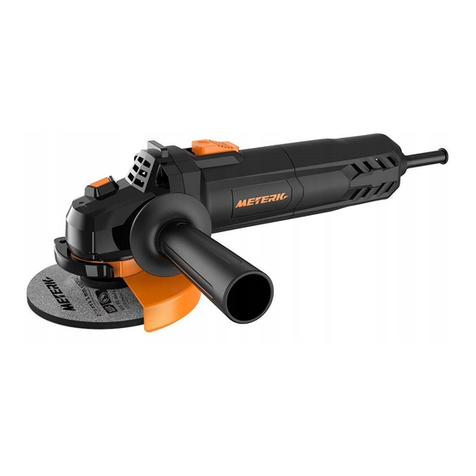
Meterk
Meterk S1M-GW20-115 Translation of the original instructions
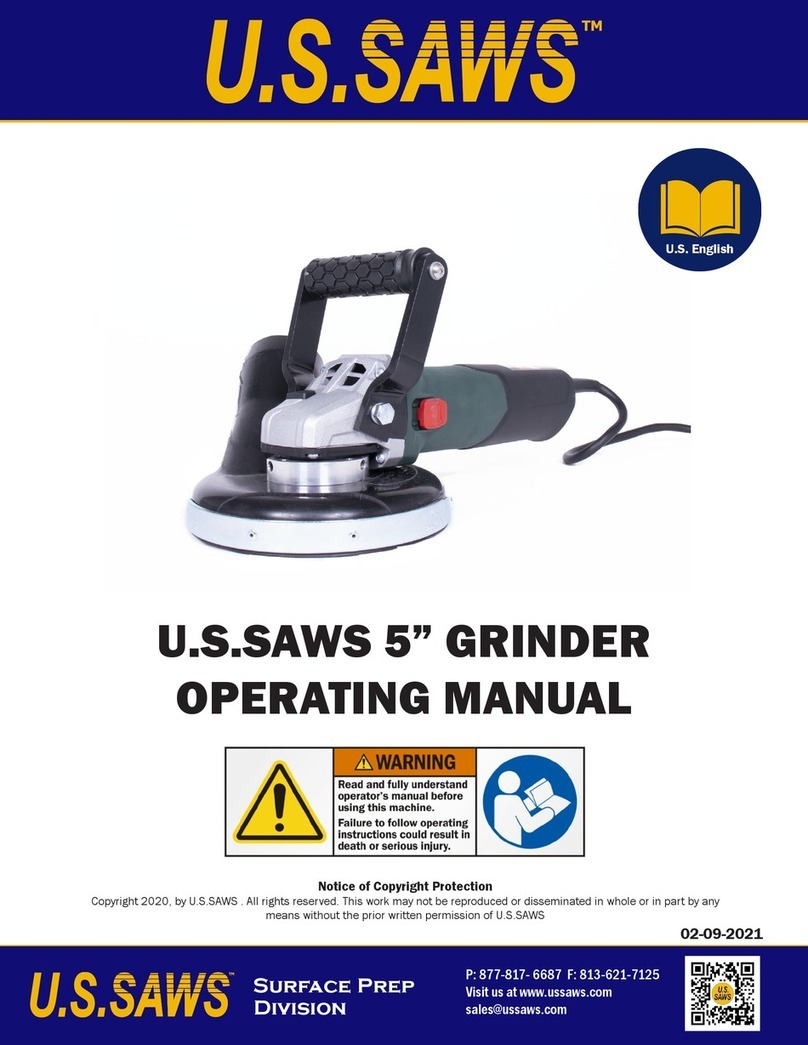
U.S.SAWS
U.S.SAWS SX65000C operating manual
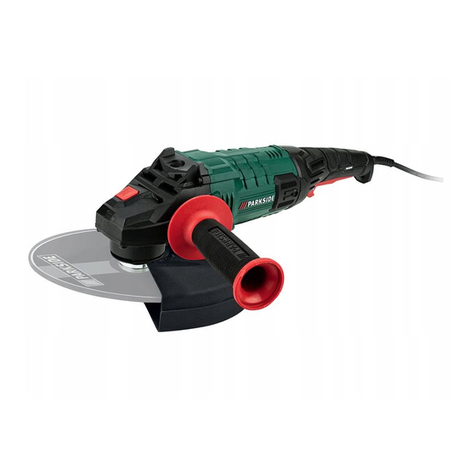
Parkside
Parkside PWS 230 C3 Translation of the original instructions

SUHNER ABRASIVE
SUHNER ABRASIVE ASC 9 Technical document

PTA
PTA P1322 Operation manual

Craftsman
Craftsman CMCG400 instruction manual







